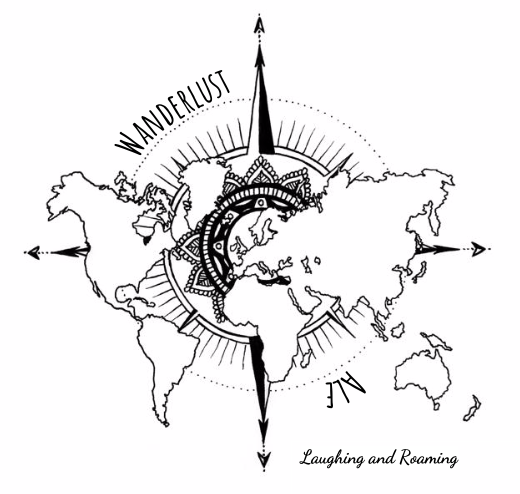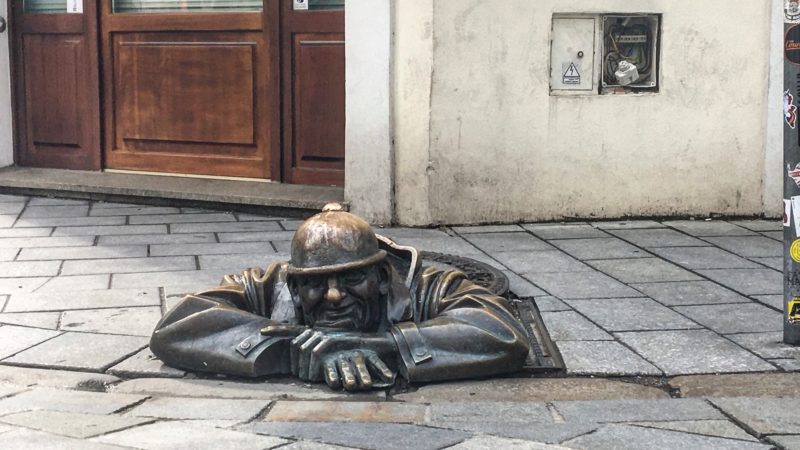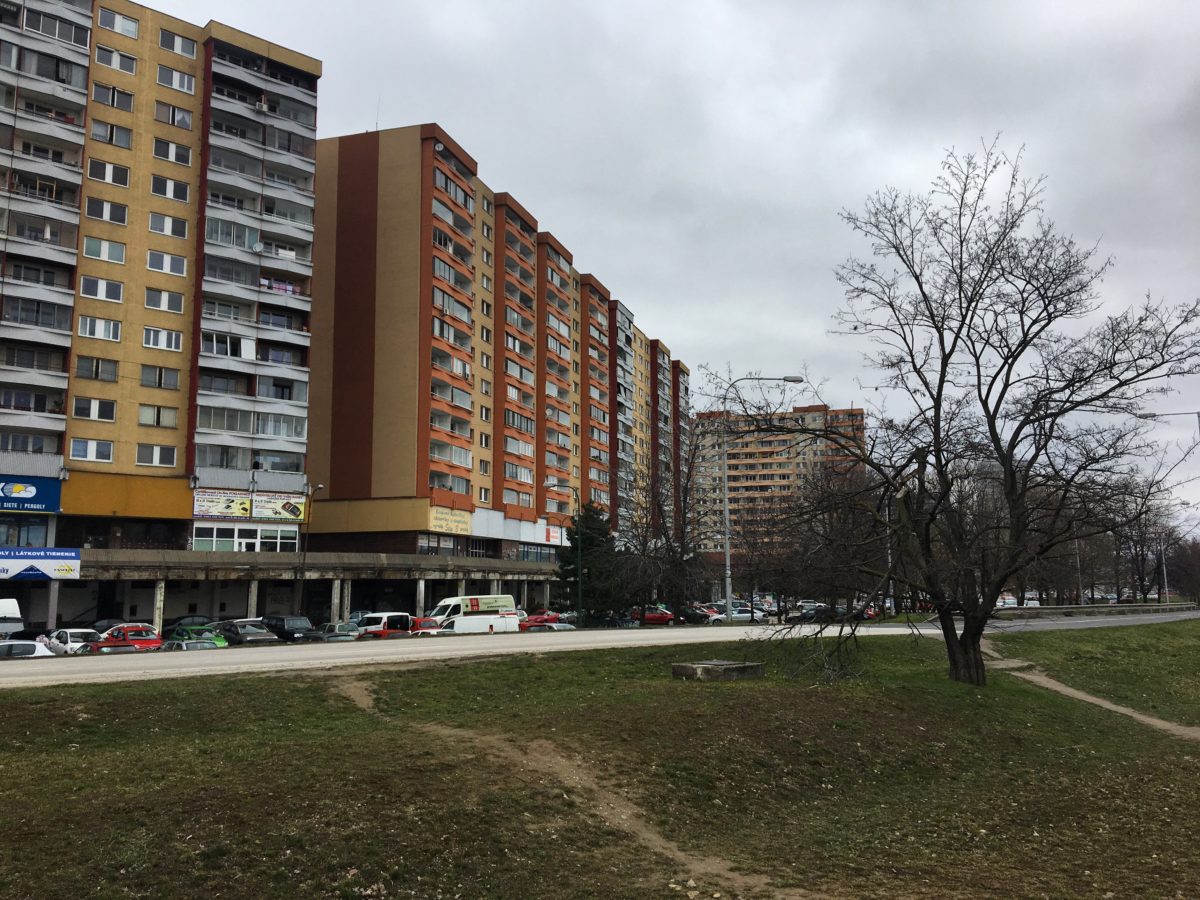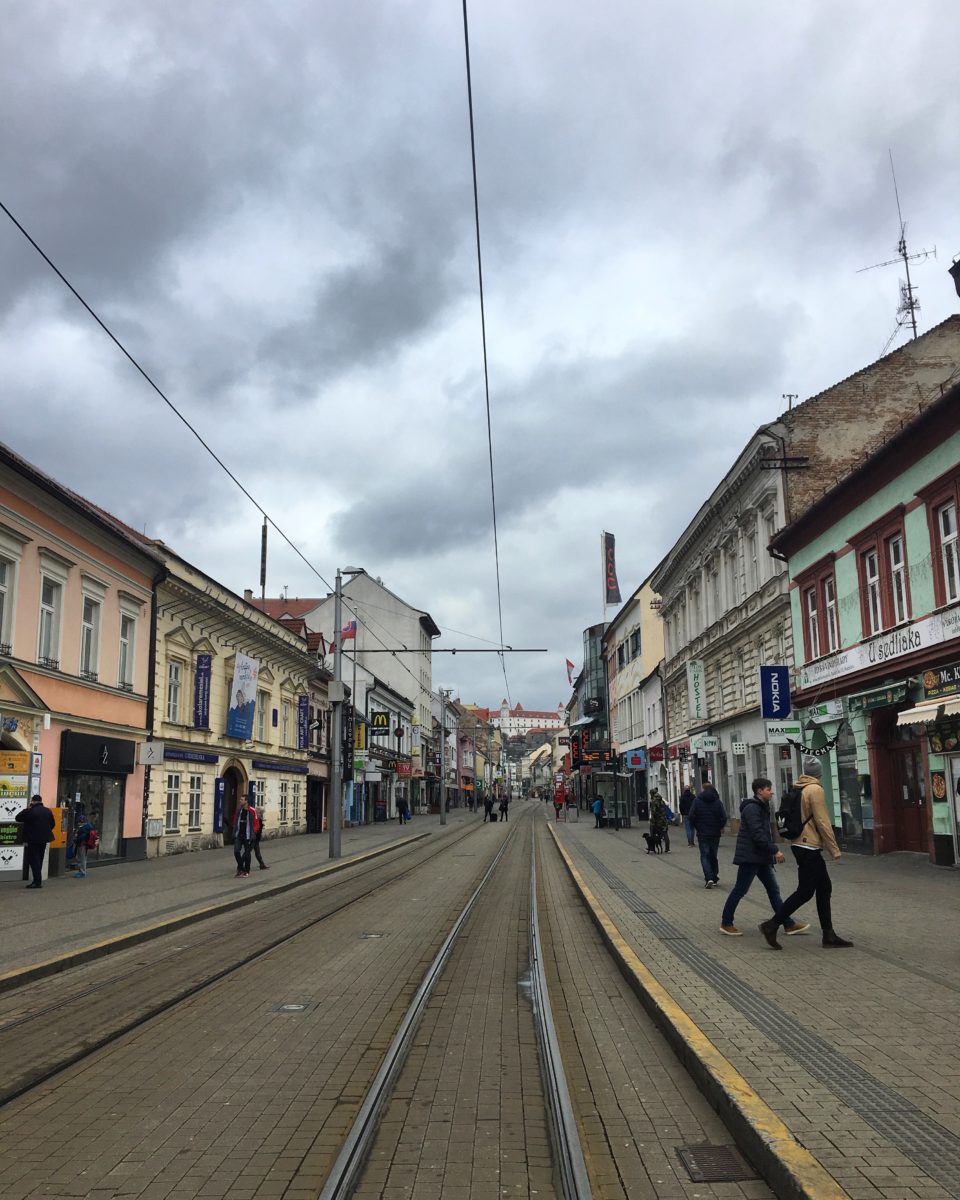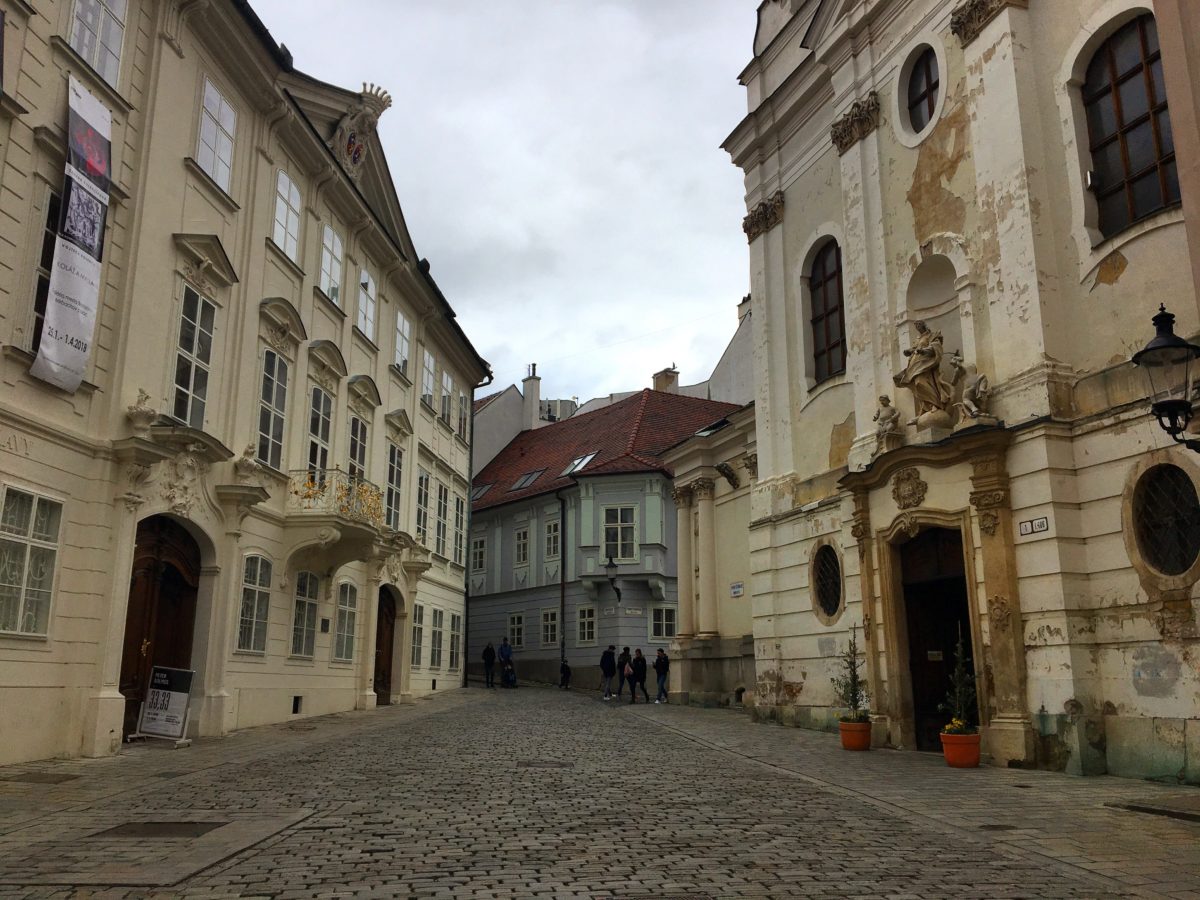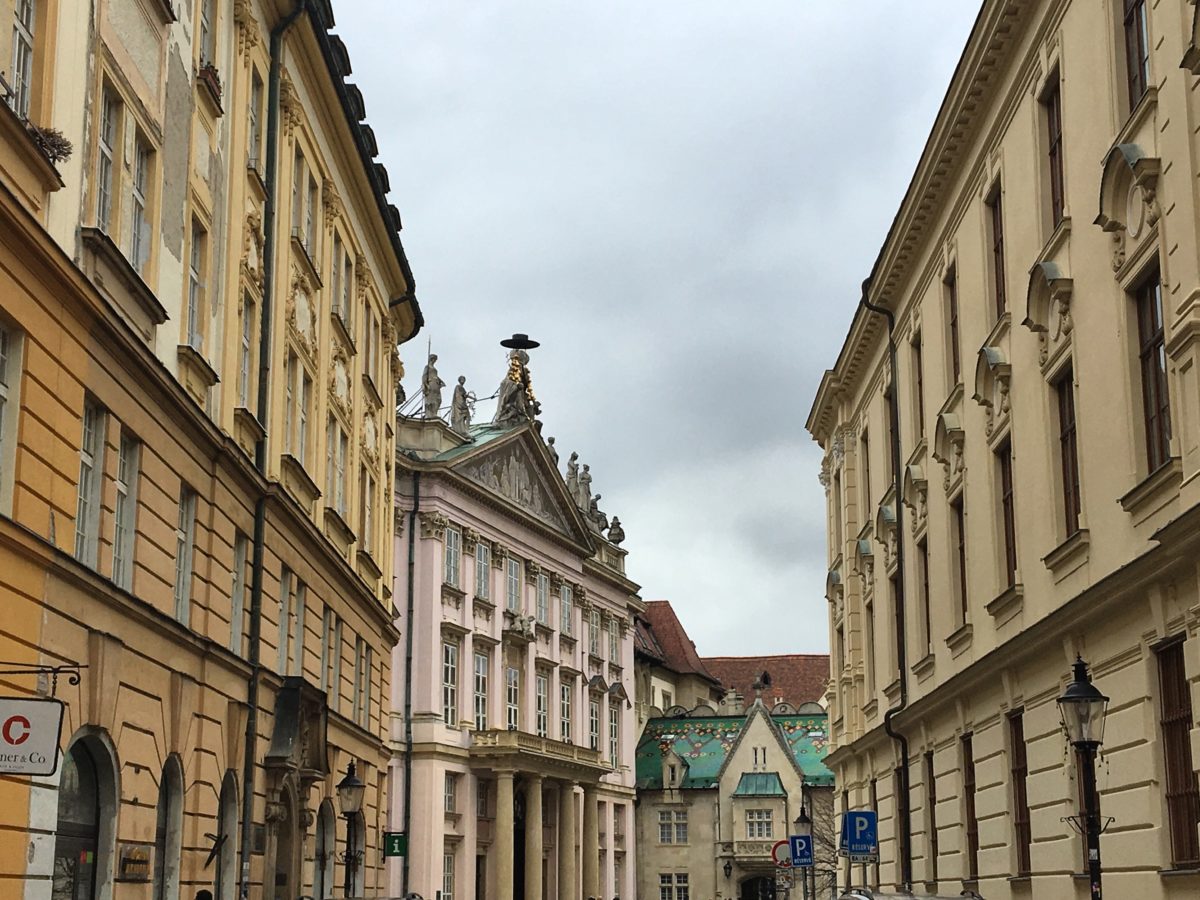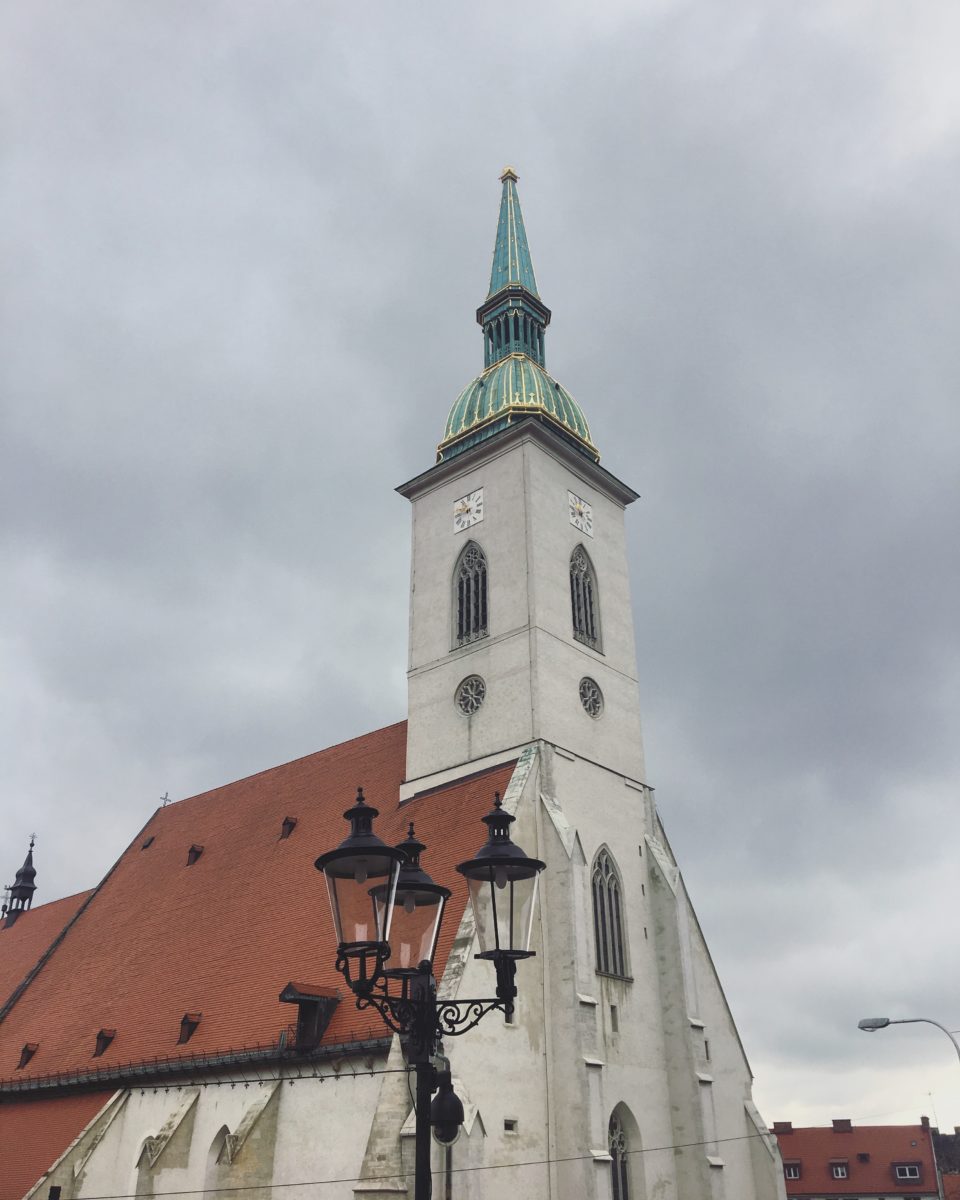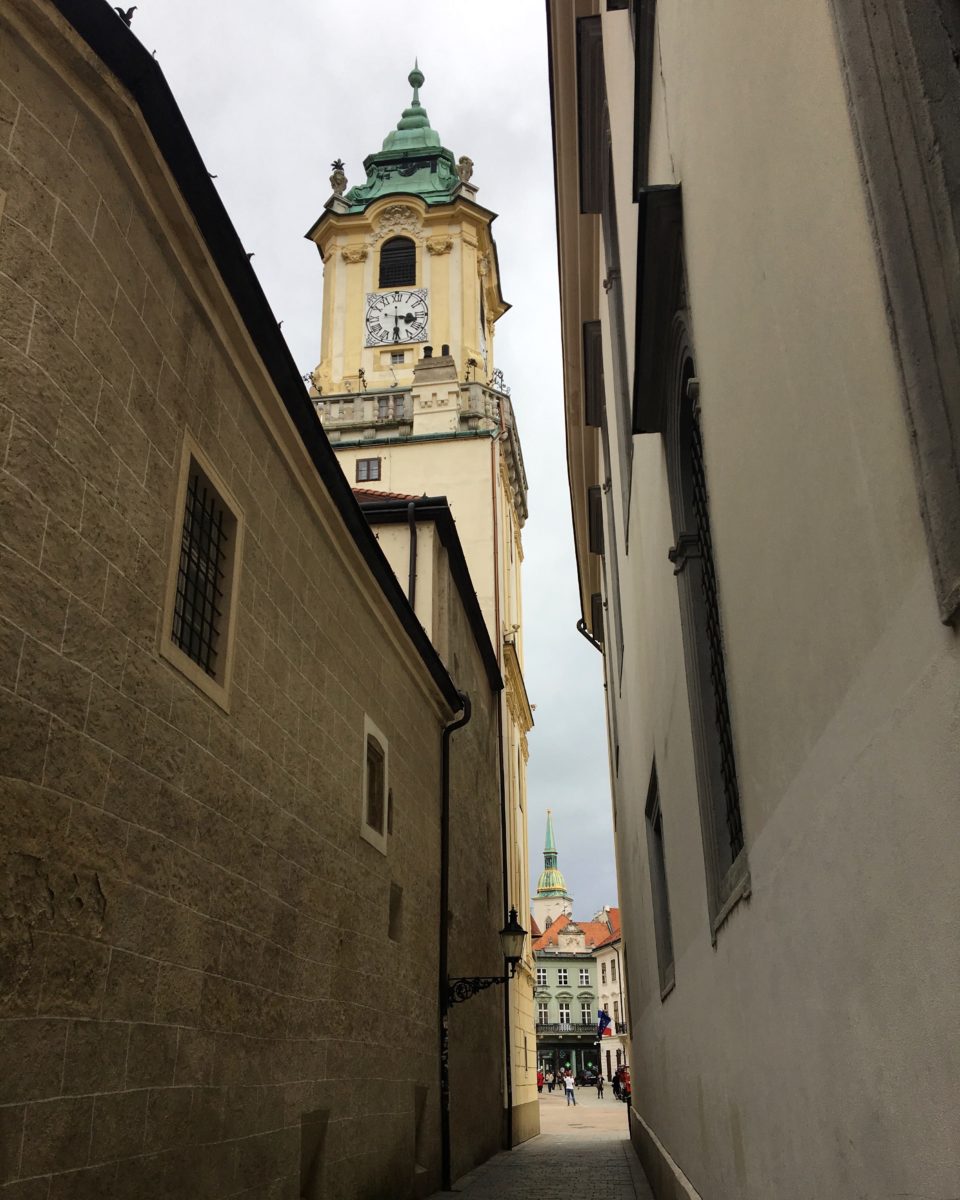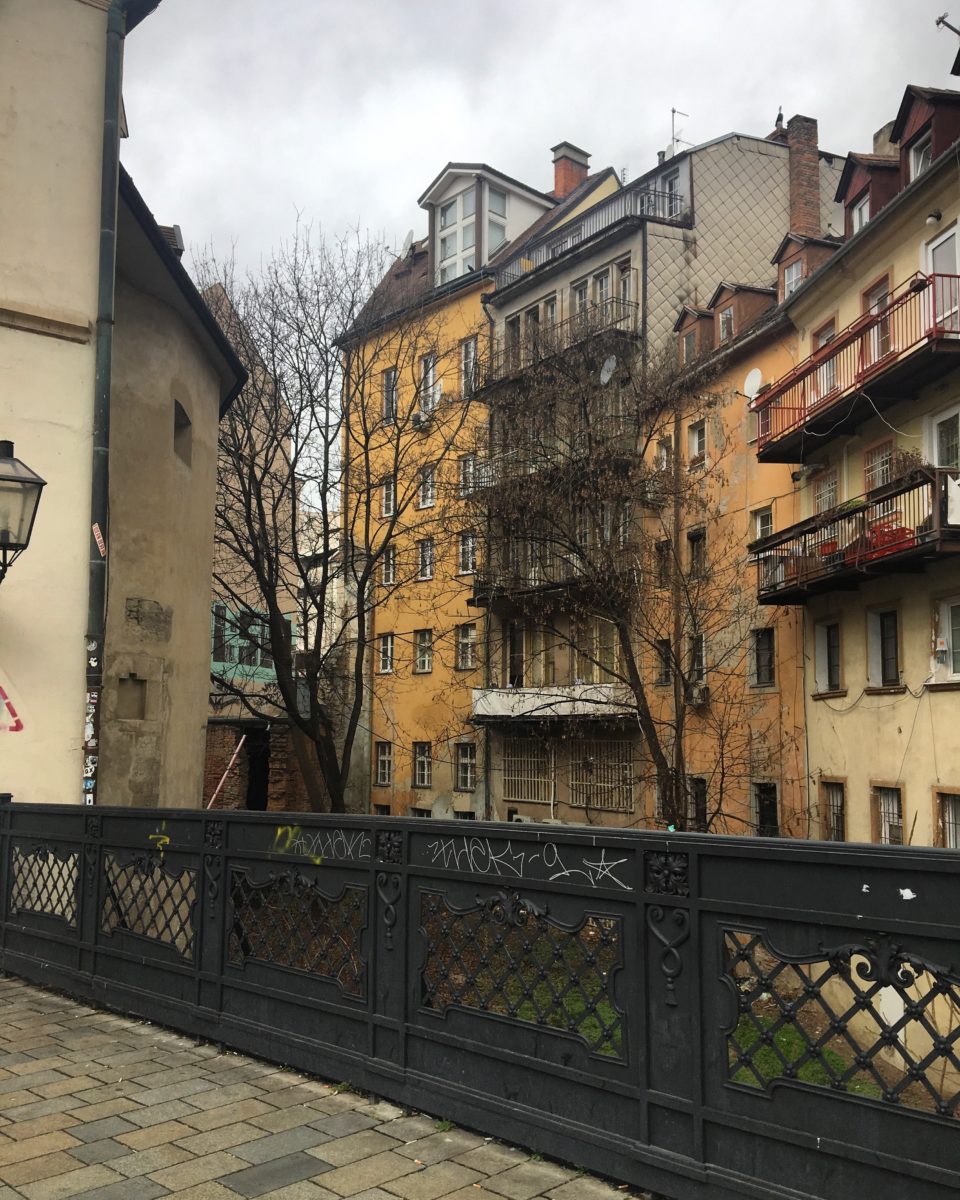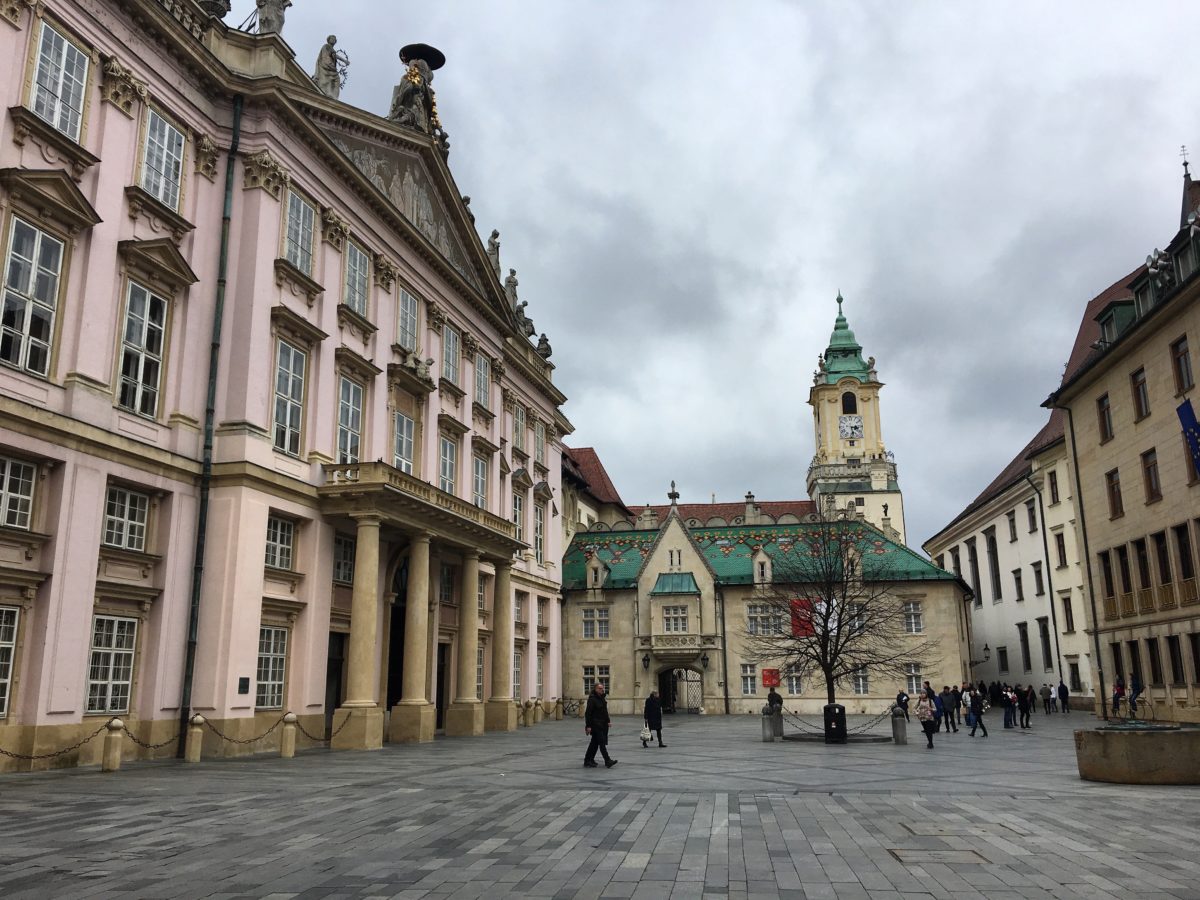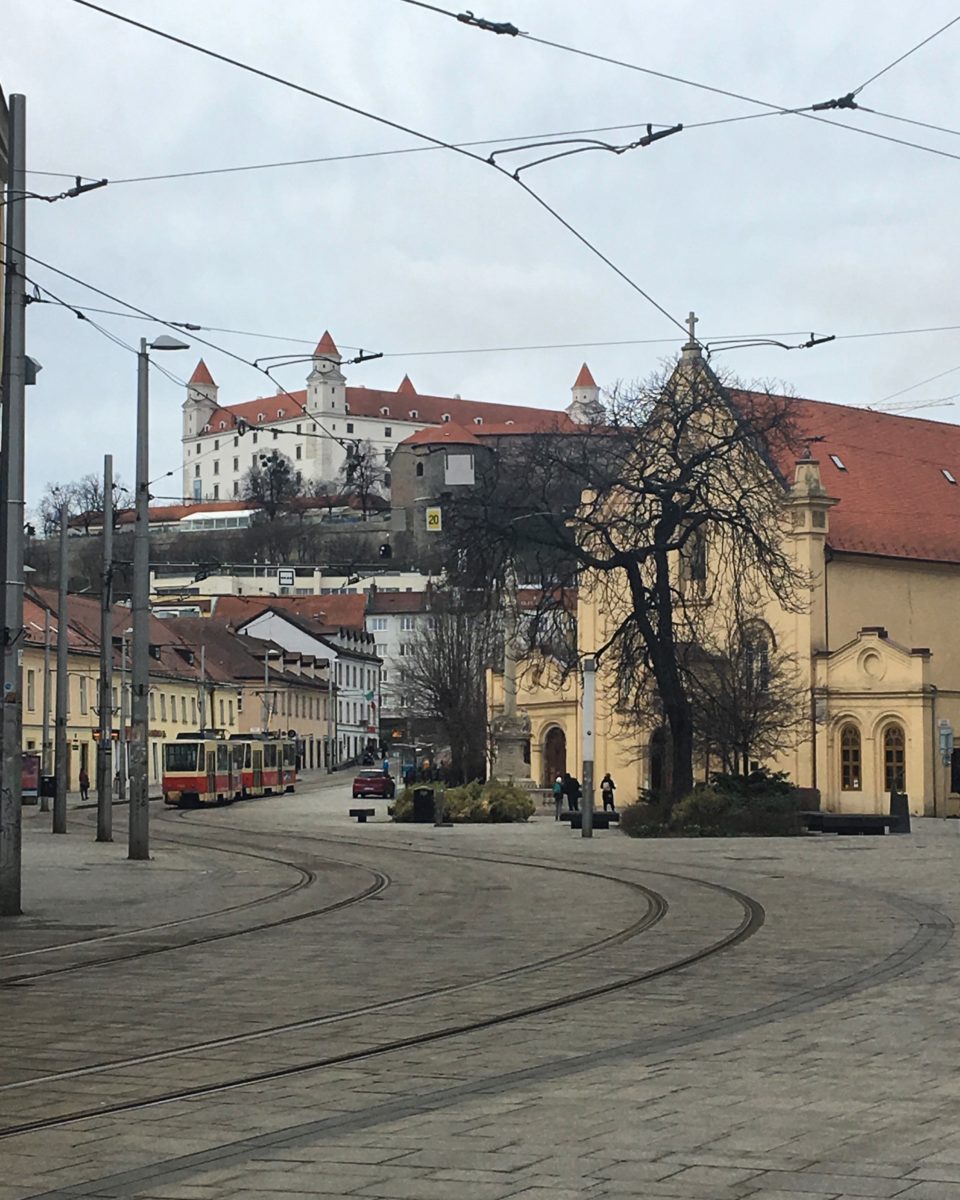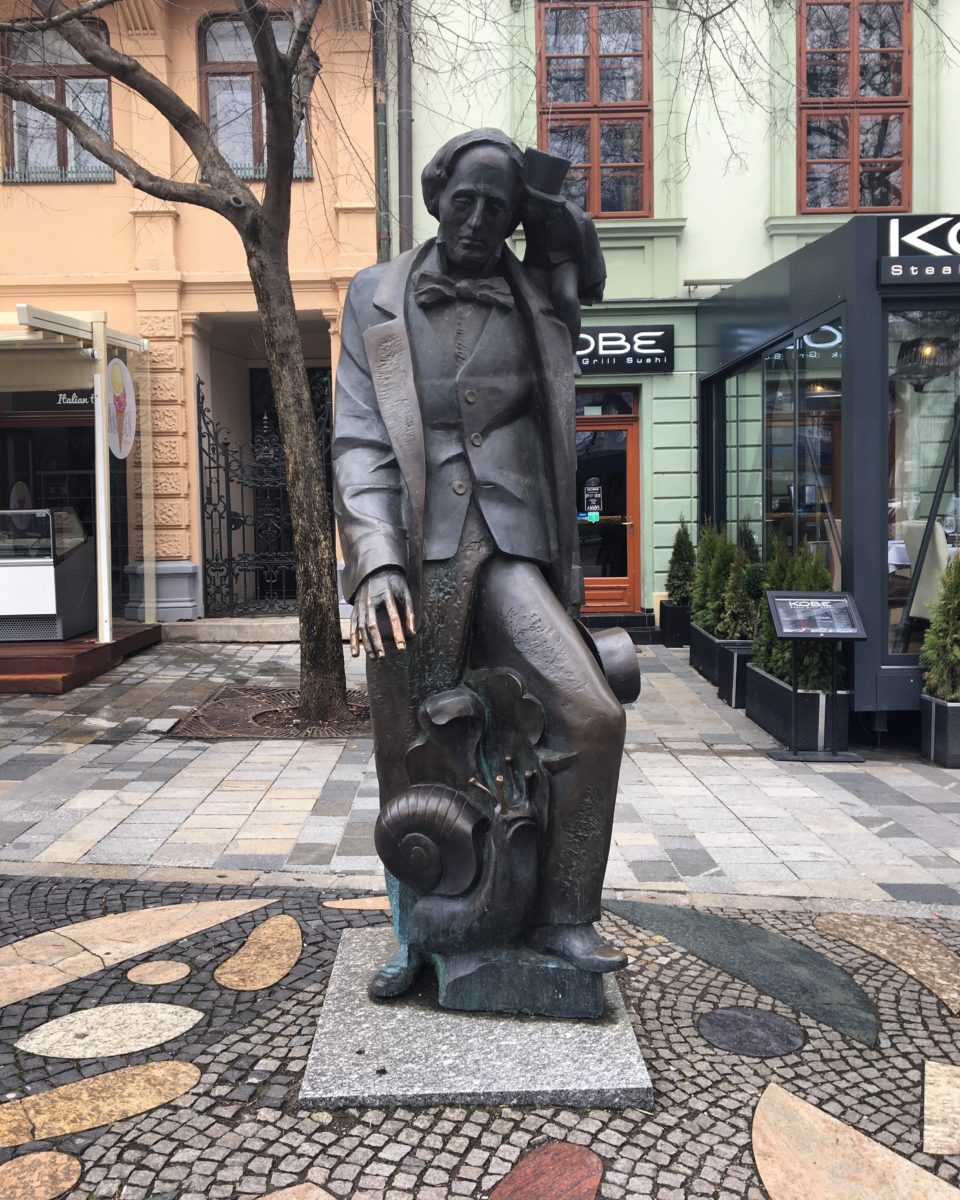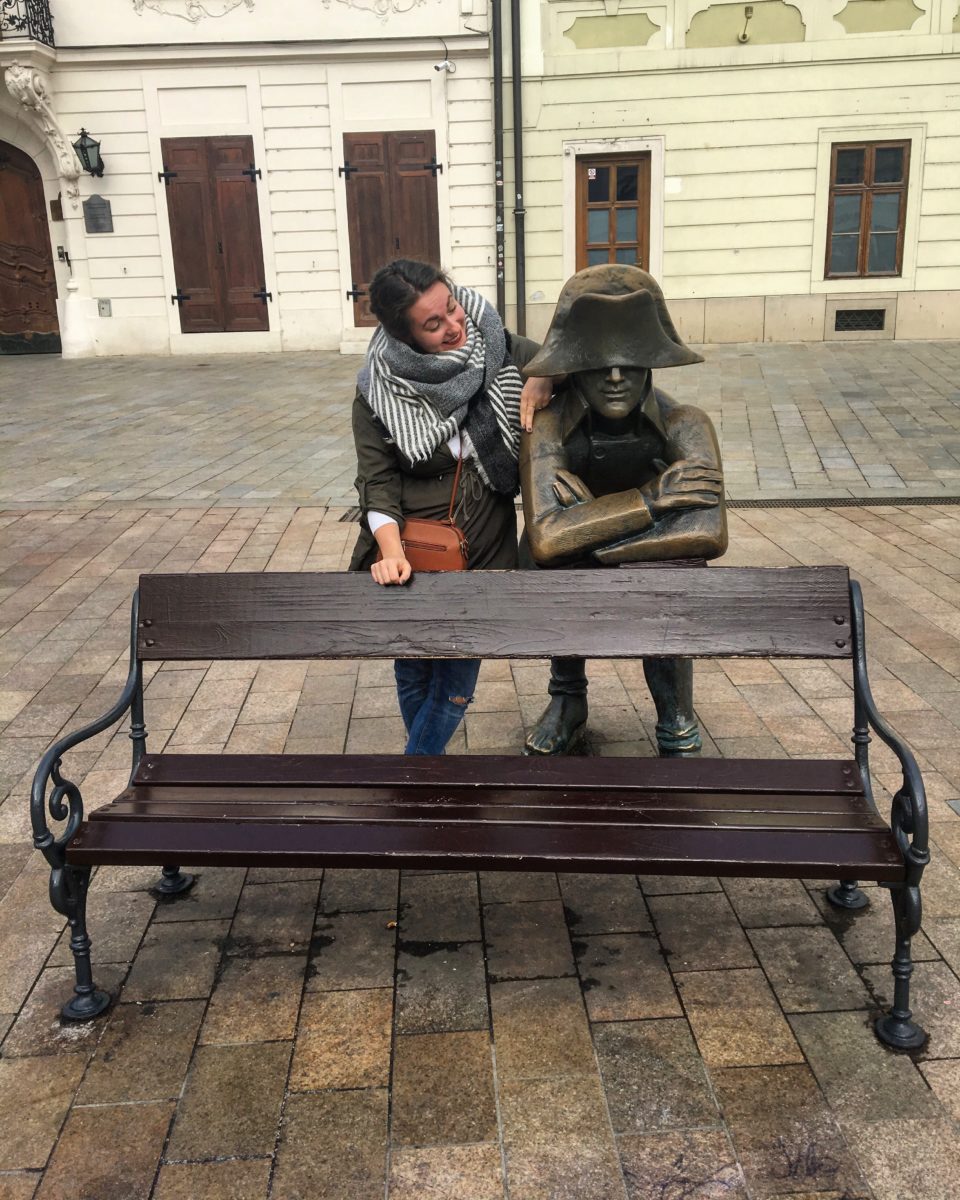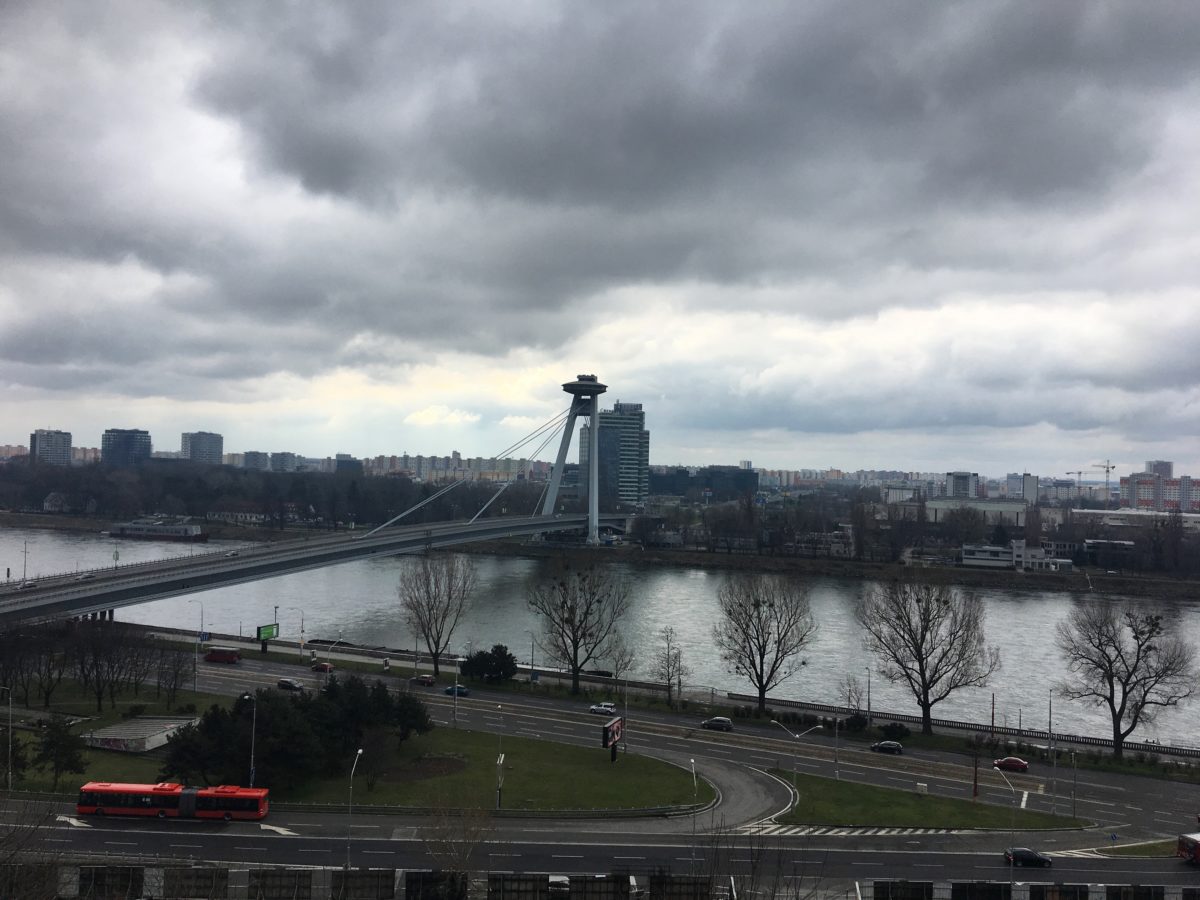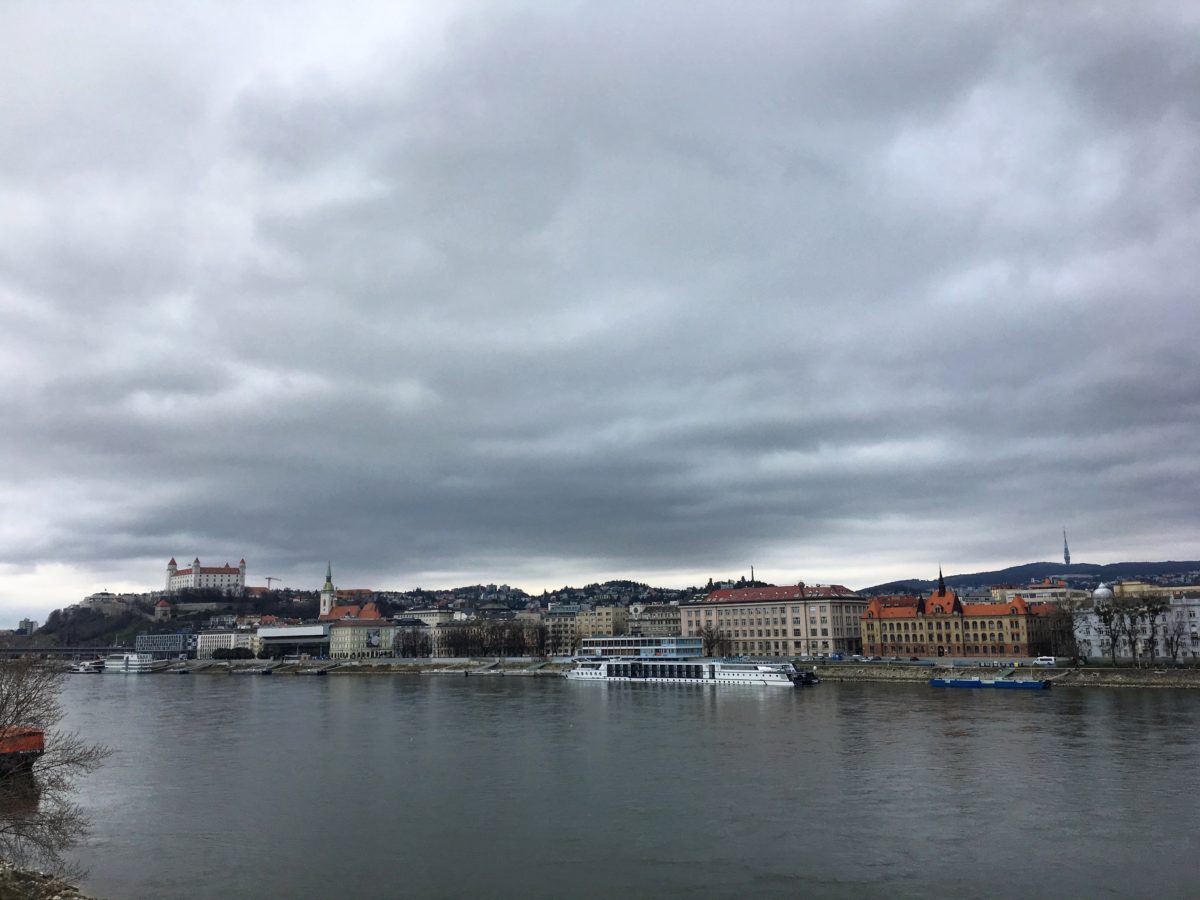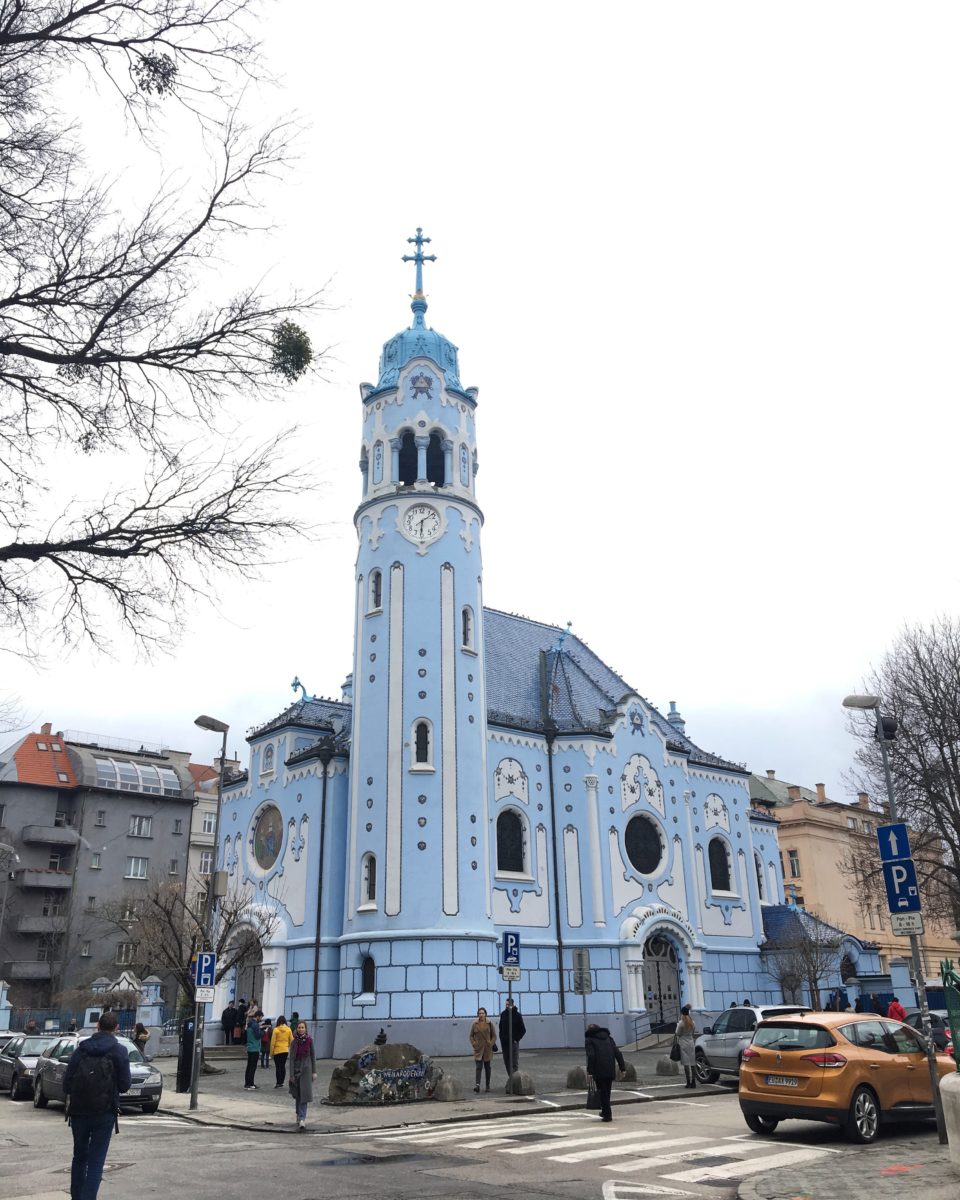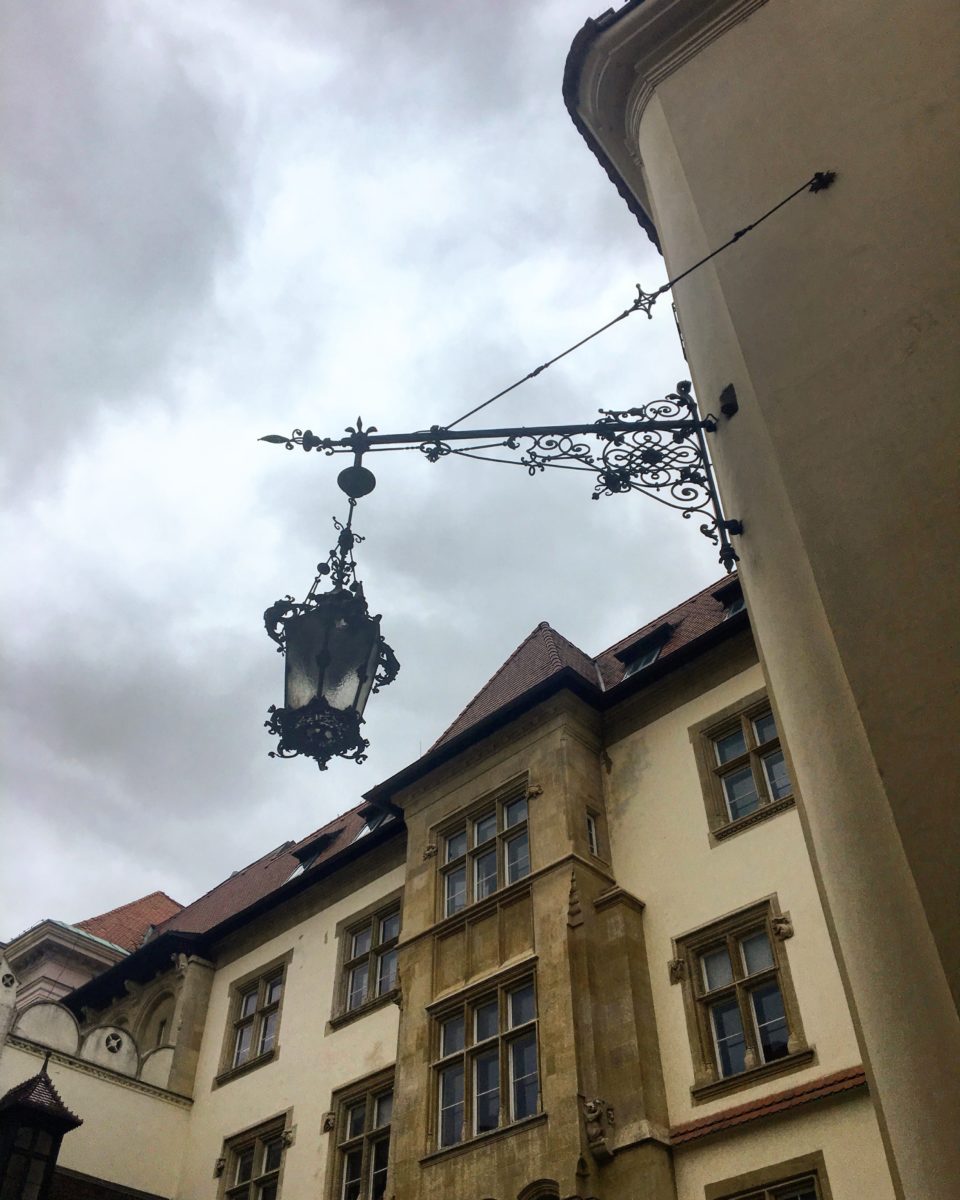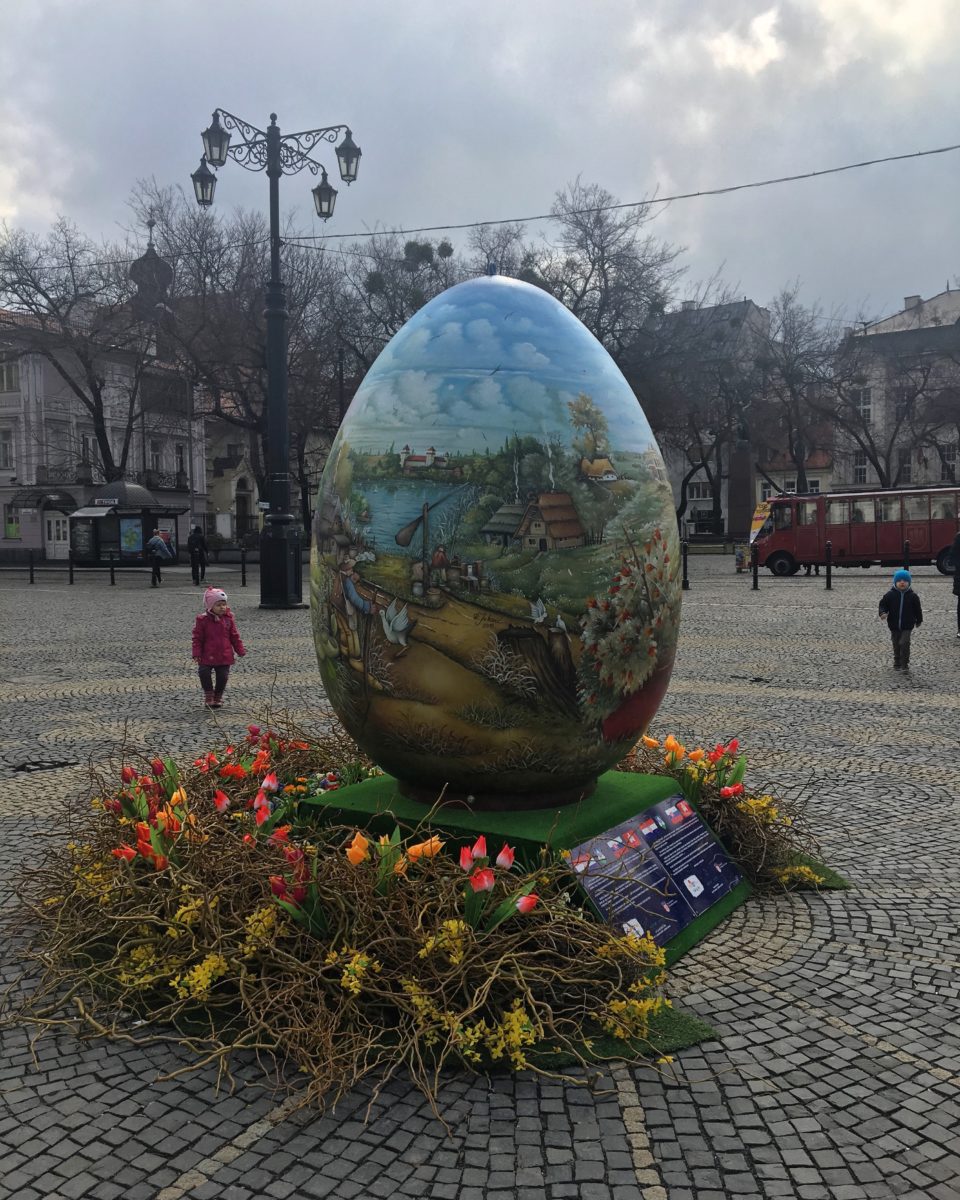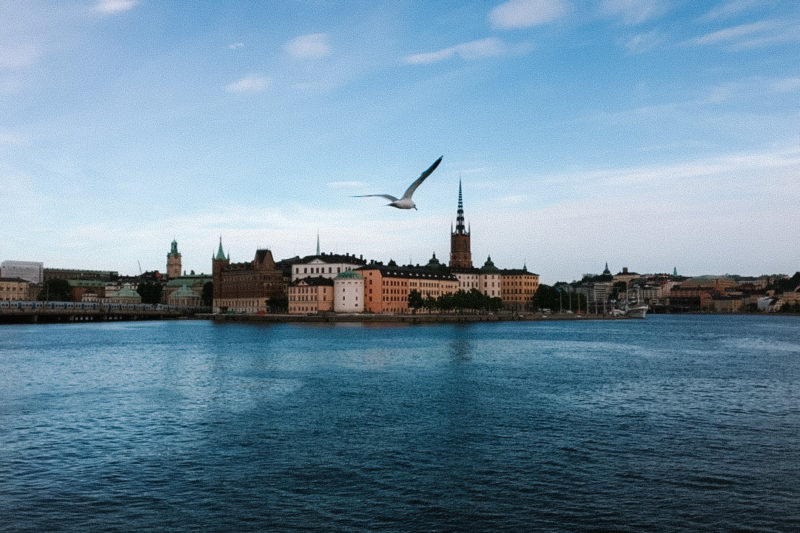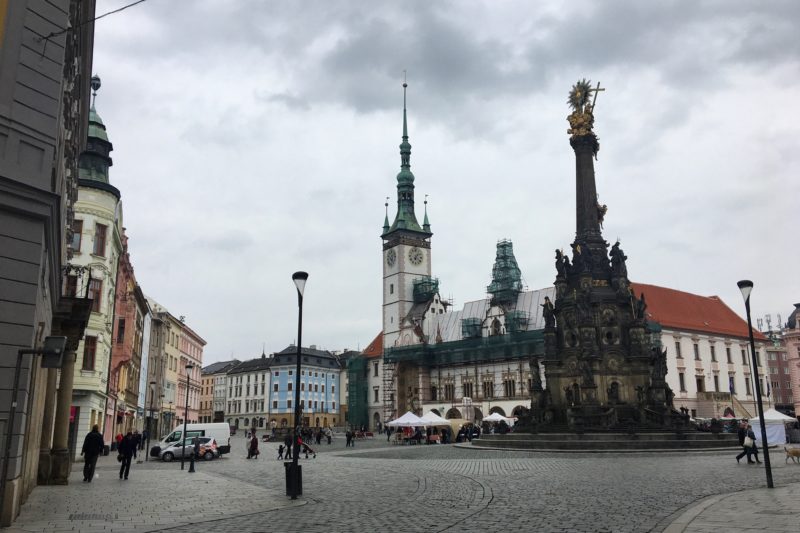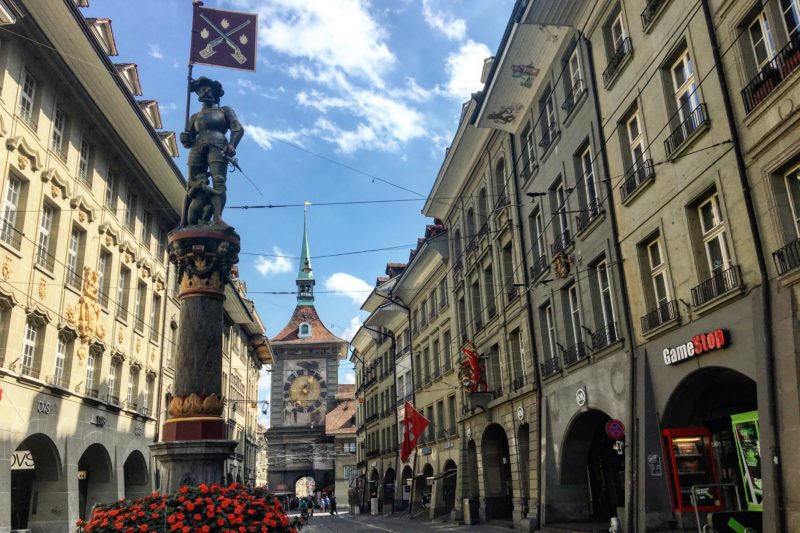I decided every year to try to visit at least one European capital, in the hope of arriving at the age of 30 and having discovered them all. I made a commitment, about ten of these cities remain on my bucket list and for the year 2018 (yes, I am late in my articles), Bratislava intrigued me. Taking advantage of the extended Easter weekend, I ventured there for two days and then continued my exploration in the Czech Republic, in the Moravian region.
You don’t drool over Bratislava, but the Slovakian capital arouses curiosity. As a young emancipated city, Bratislava confronts the advantages and disadvantages of the small and recent capitals that are still developing. However, it seems to be starting to emerge from the shadows of its sisters Prague, Budapest and Vienna to become one of the new Central and Eastern European destinations that count.
As you leave the main railway station, it’s a staggering observation! Coming from Vienna, I notice that we have crossed the Iron Curtain and that its traces are still clearly visible in the landscape, more than 25 years after the fall of the Soviet Union. Although not part of the USSR, Slovakia, which until 1992 was part of Czechoslovakia with the Czech Republic, was a member of the Warsaw Pact (a former military alliance between the countries of Eastern Europe and the USSR) and therefore a member of the Eastern Bloc.

Outside the Old Town, the outskirts of the capital visually express this communist past with austere, cold and even neglected, dark-coloured concrete buildings. In the far distance, we can also see big industrial towers and factories (which contribute enormously to the local economy, it is the first car-producing country per inhabitant in the world!). We also went to the Petrzalka district under the Danube, which is still very much marked by the large ensembles of the Soviet era. However, many more modern buildings, of an architectural quality which is not unanimously appreciated by the inhabitants, started to grow as soon as the Slovak independence, which brings a sacred contrast sometimes between styles.
All of this is completely different when we arrive in Staré Mesto, the Old Town. Although we have the impression that we are walking through the same cobbled streets over and over again, it is here that all the interest of the city is concentrated. It invites visitors to take a pleasant stroll along its baroque architecture and its maze of venerable cobbled streets, lined with charming facades and curiosities.

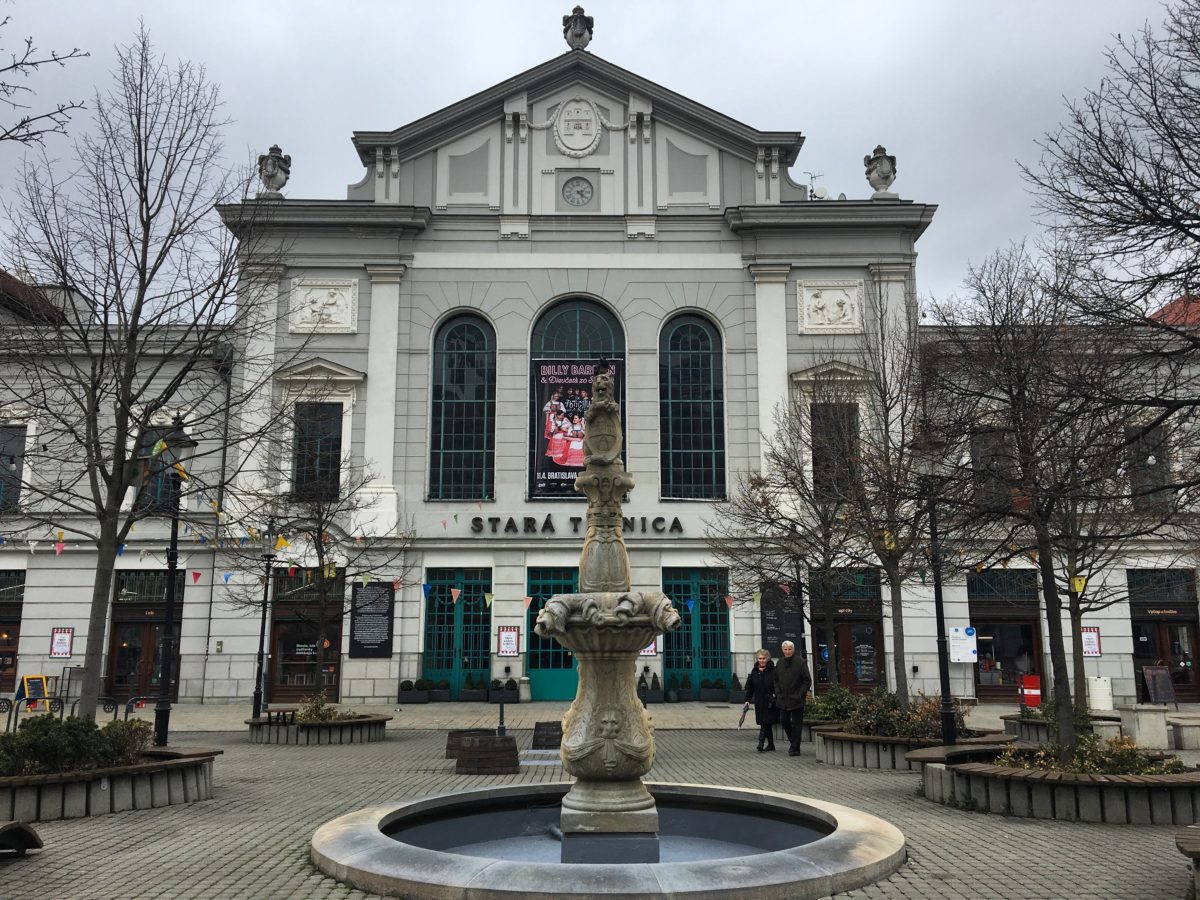


In the historic centre, I mainly loved going to discover the unusual statues that have been scattered throughout the city to brighten it up. Some of them delight passers-by and have become a must-see, such as Cumil, Bratislava’s most famous statue. It is the work of the sculptor Viktor Hulik and was erected in 1997. It depicts a man coming out of a sewer. Many urban legends describe him either as a communist worker resting, or as a voyeur looking up girls’ skirts… In brief, a naughty sewer man who has become over time one of the symbols of the city.
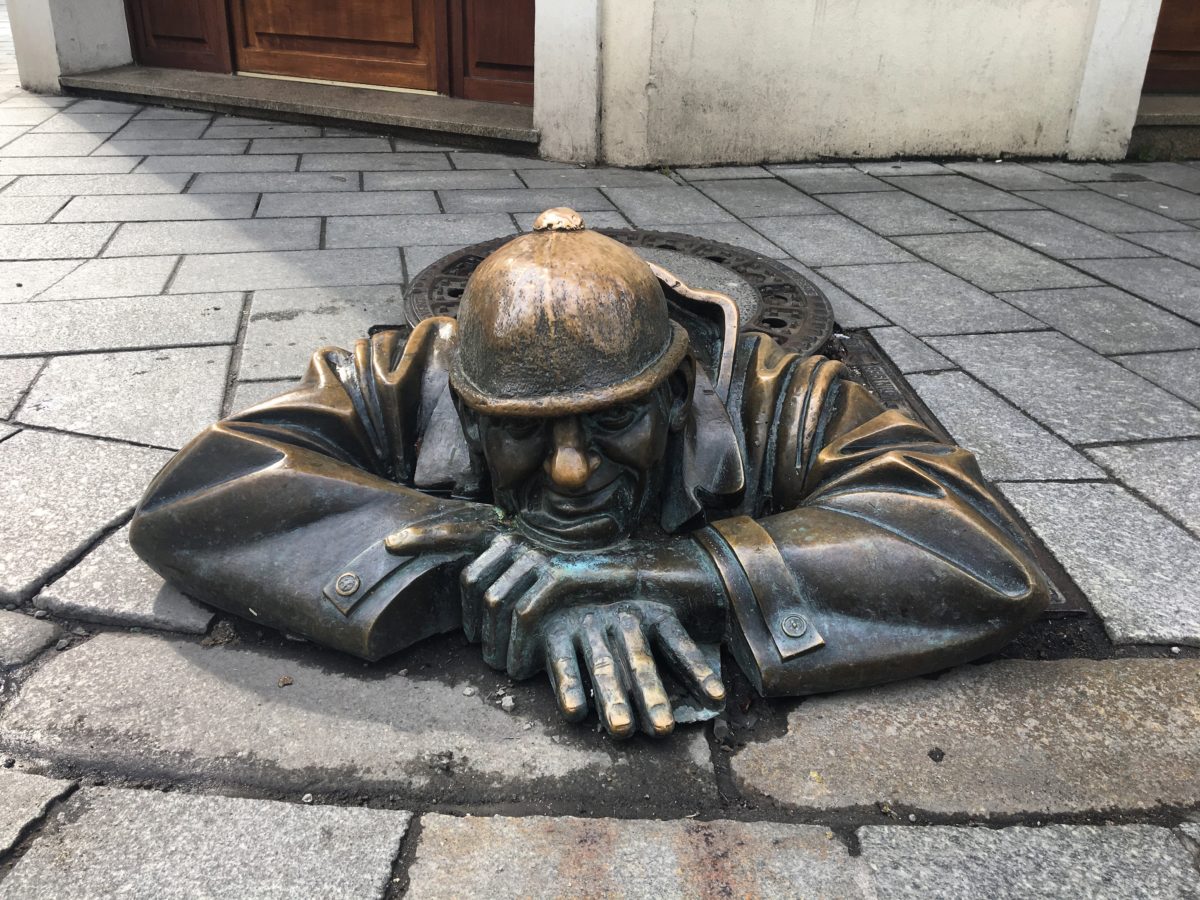
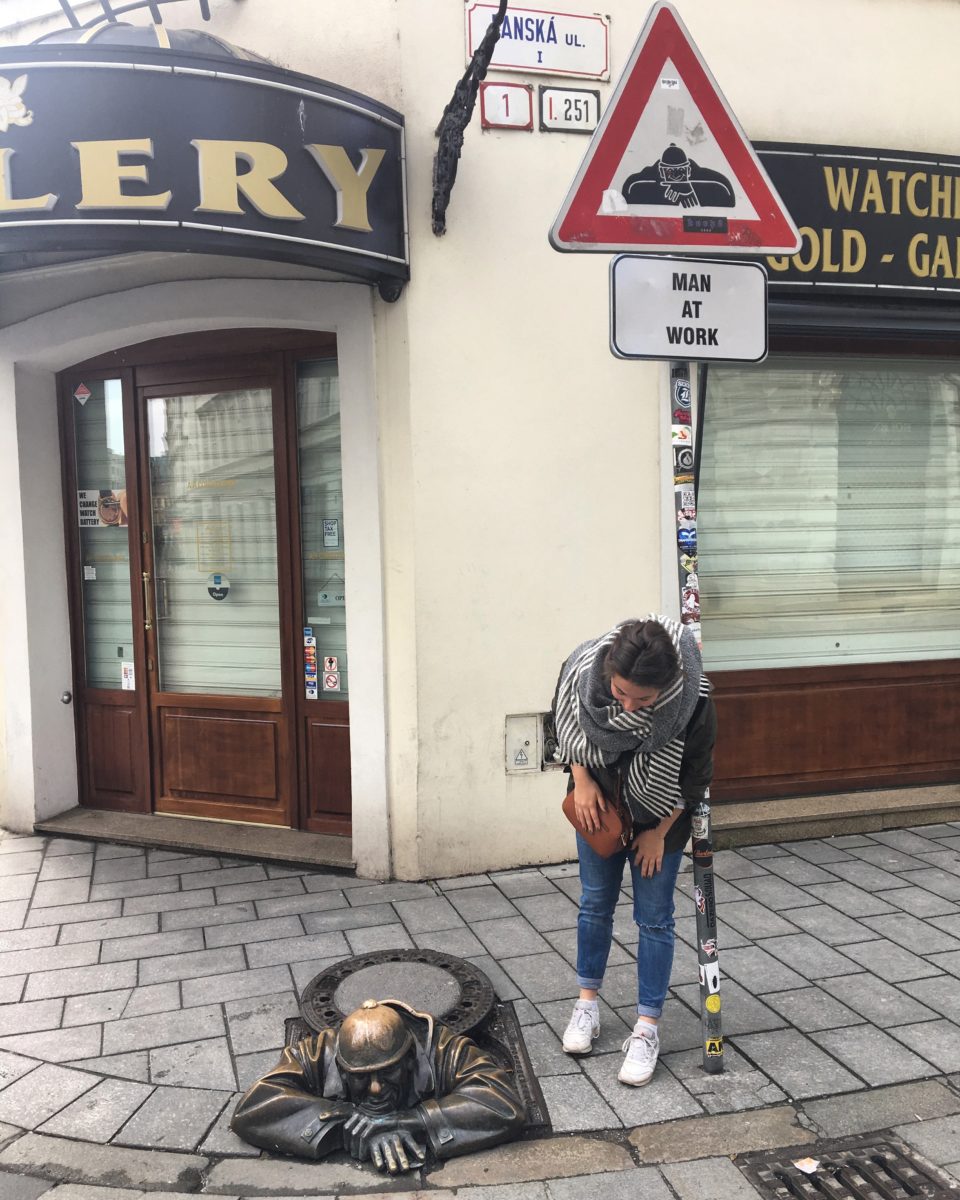
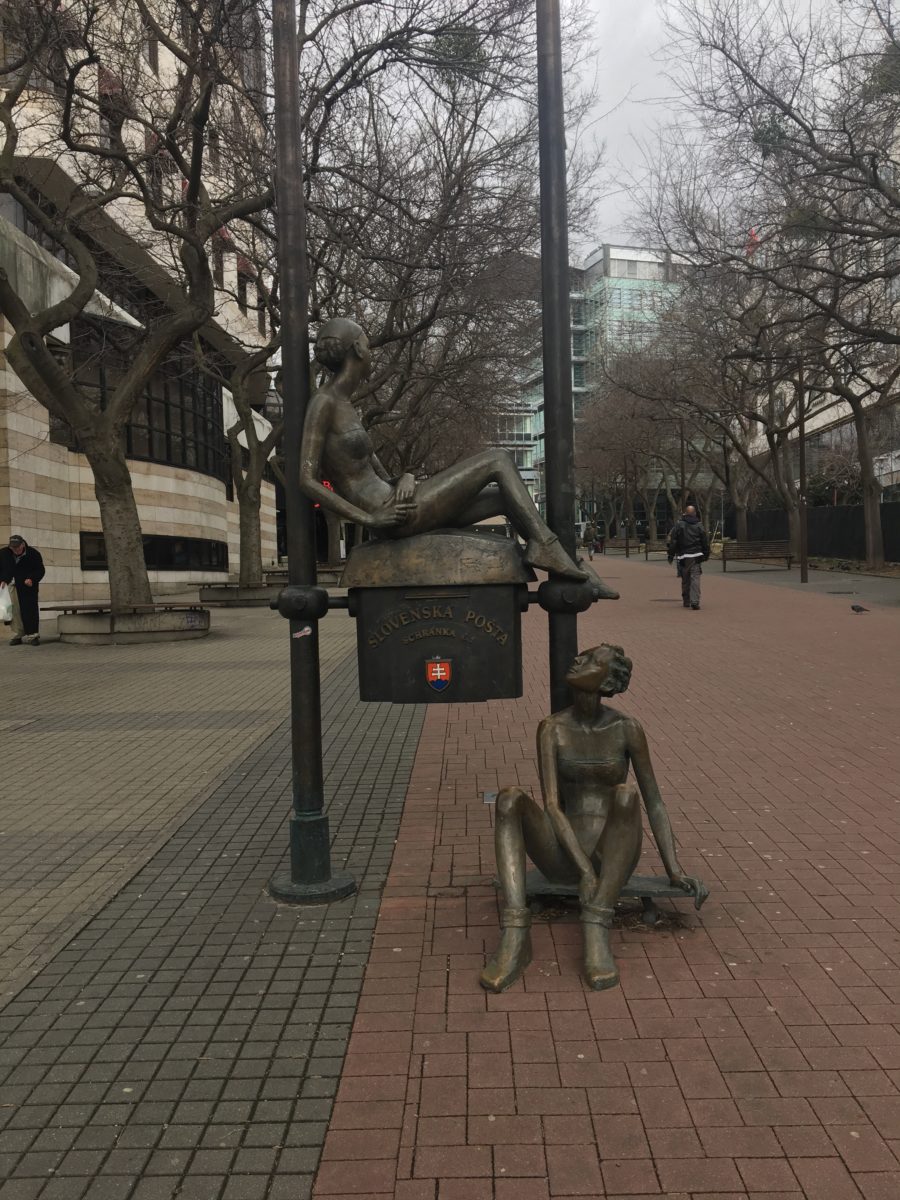
This Old Town of Presbourg, as it was once called, lies at the foot of the castle hill. Although its silhouette adorns the Slovak 10, 20 and 50 cent euros, I cannot say that this castle is grandiose. Admittedly, its white colour is pure and if the weather is nice, the appearance is pretty, but all this leaves visitors rather indifferent. It is especially interesting for its museum and its beautiful collections.
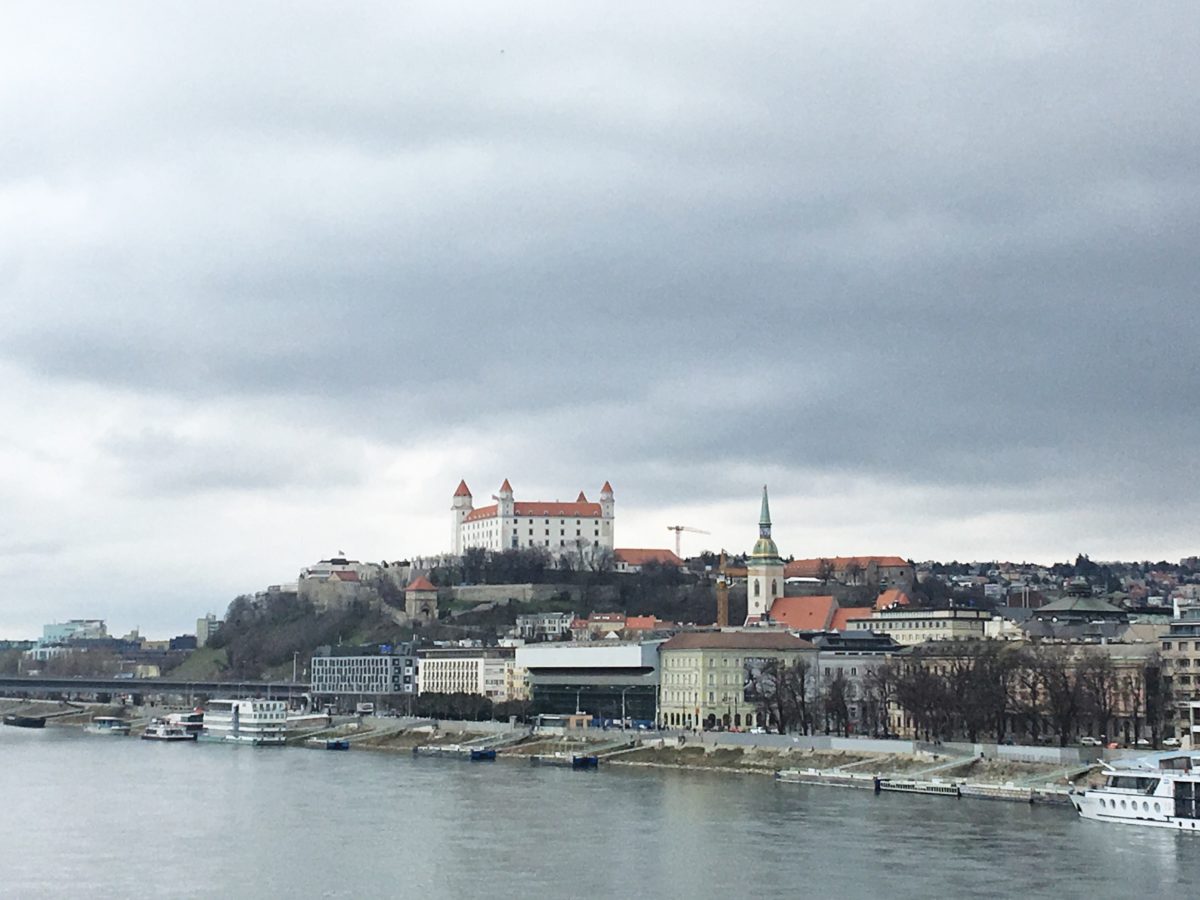
Overlooking the Danube (which is neither beautiful nor blue) from its hill, however, it is a good vantage point to admire the surroundings (when the sky is clear, the view extends as far as Hungary) and to rest in the nearby park.
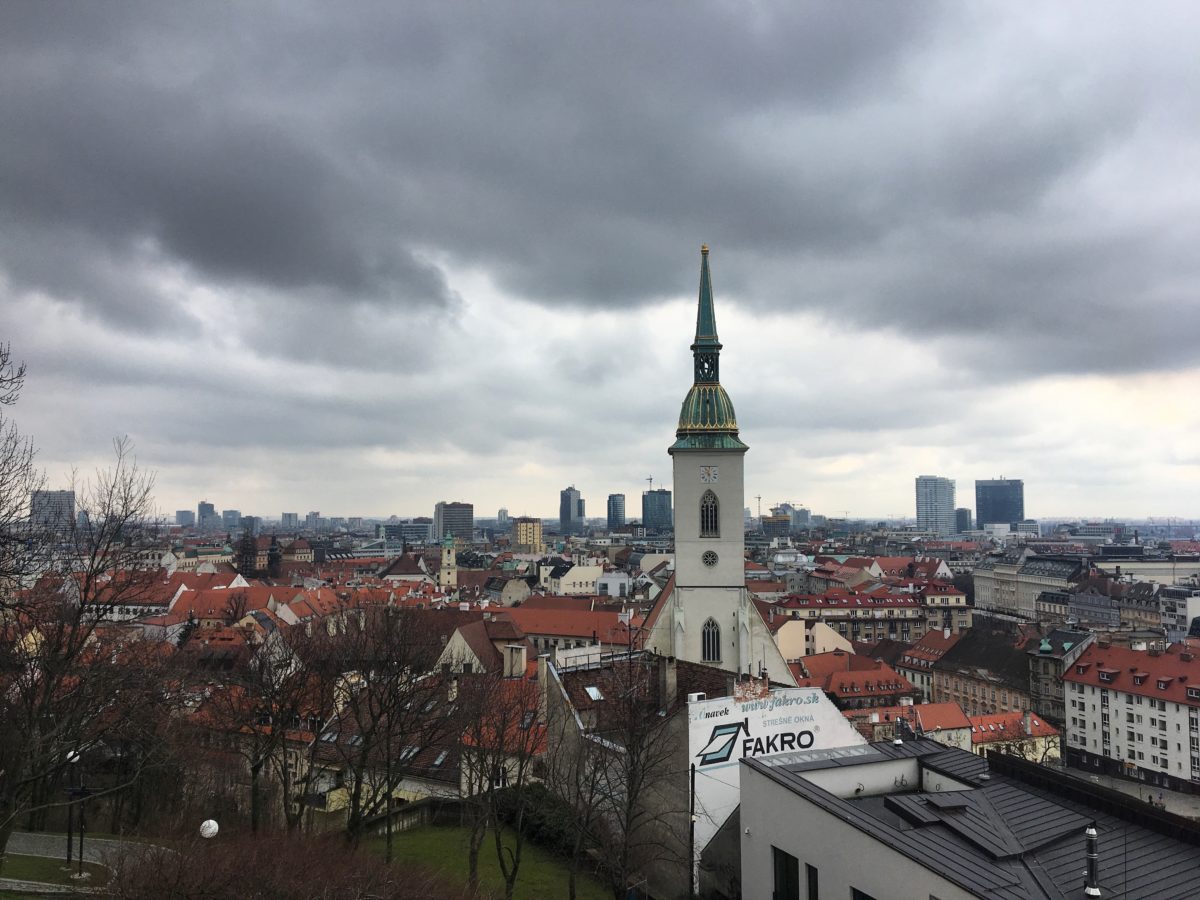
But Bratislava’s most beautiful monument is not in its historic centre. You have to go a little further east to find yourself in front of the most atypical church I have ever explored.
I am clearly not a religious person, however, when I travel, I discover churches that are worth seeing, even if I don’t go there for the faith but for its history and architecture. As a result, the blue church is very different from all the other religious sites I have had the chance to observe. A completely kitschy set that looks like cotton candy. A big candy cane in the middle of nowhere and which detonates in this neighborhood under construction. In the Hungarian art nouveau style, the Szecesszio, the building is the work of the architect Ödön Lechner, nicknamed the Hungarian Gaudi.
The Slovak capital is also the new favourite destination for night owls. The atmosphere here is really entertaining and many bars and nightclubs have been set up in the Old Town over the last ten years. As Bratislava is only 70 km from Vienna, many Austrians also come to Bratislava to party and bachelor parties are not inconsequential. However, when you walk around the city during the day, you don’t feel the festive atmosphere. The shops don’t open until around noon, making it seem as if the locals are hungover and resting in the morning, which corroborates a Slovak proverb that says “a man is wiser in the morning than he was the day before”!

Not being a nightclub fanatic, I didn’t venture there, however many bars (an atmosphere I like more) allow you to spend a nice evening like at the Dubliner Irish Pub. So yes, the atmosphere is not really Slovak, but you never say no to a Guinness! Besides, it is in the small street Sedlárska, that the animation is the most cordial at night.
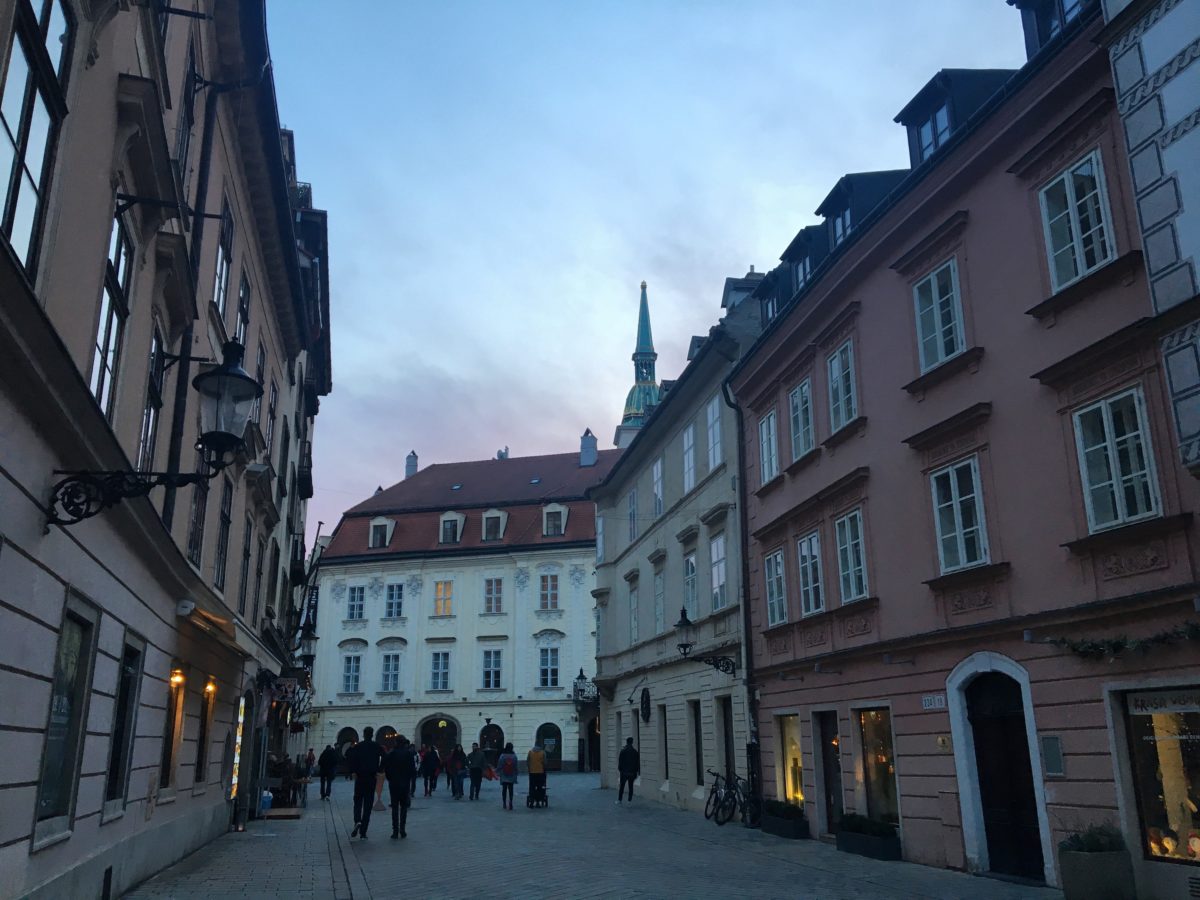
In the end, I was pleasantly surprised from Bratislava. It’s true that for once I hadn’t really been aware of what the city had to offer and it was nice just to stroll around without having to run around to see as many things as possible. The Slovaks are nice and willing to help us even though their English is still very basic, which sometimes left us in funny situations.
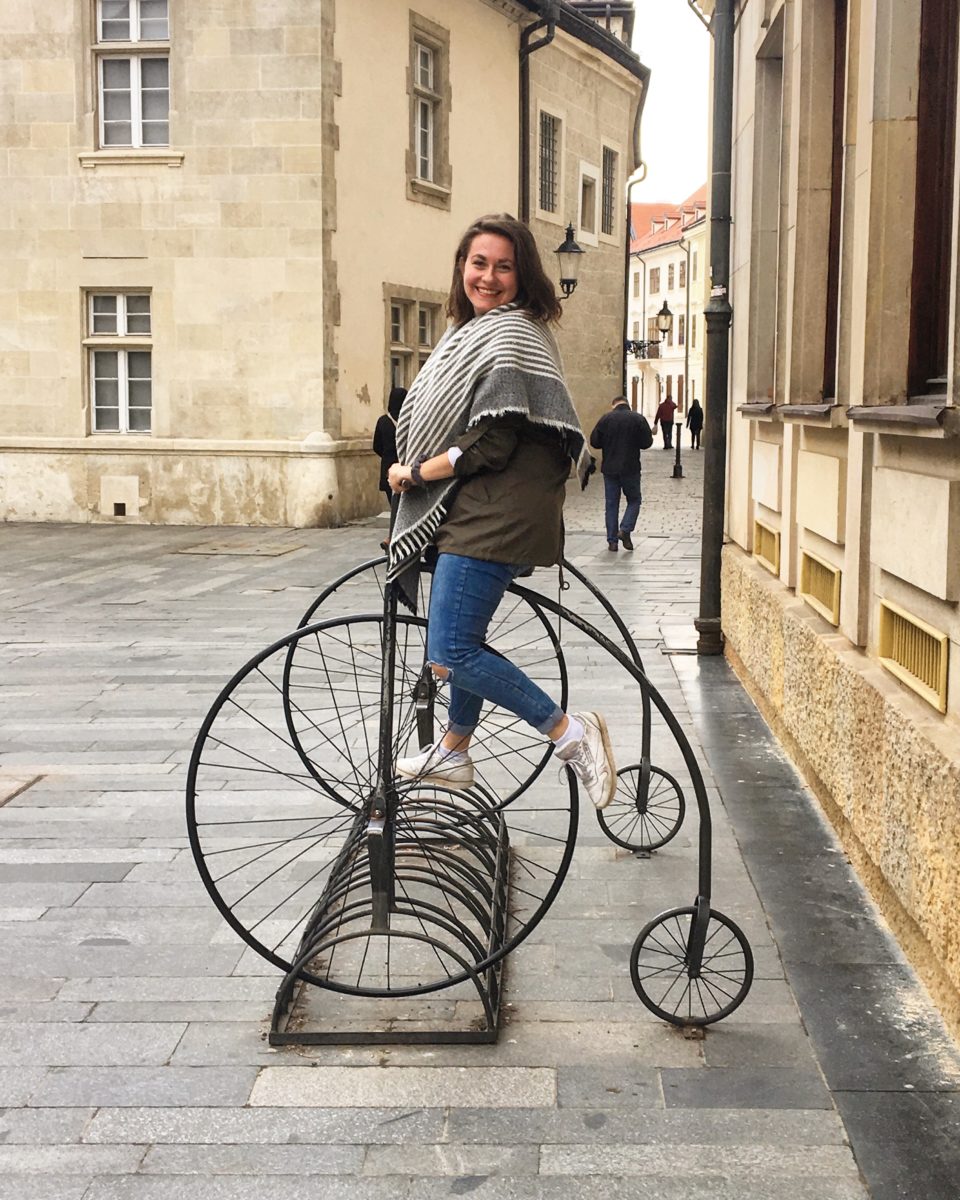
This capital can be visited in one day, but there are many places worth staying another day, enjoying and meeting nice people.
